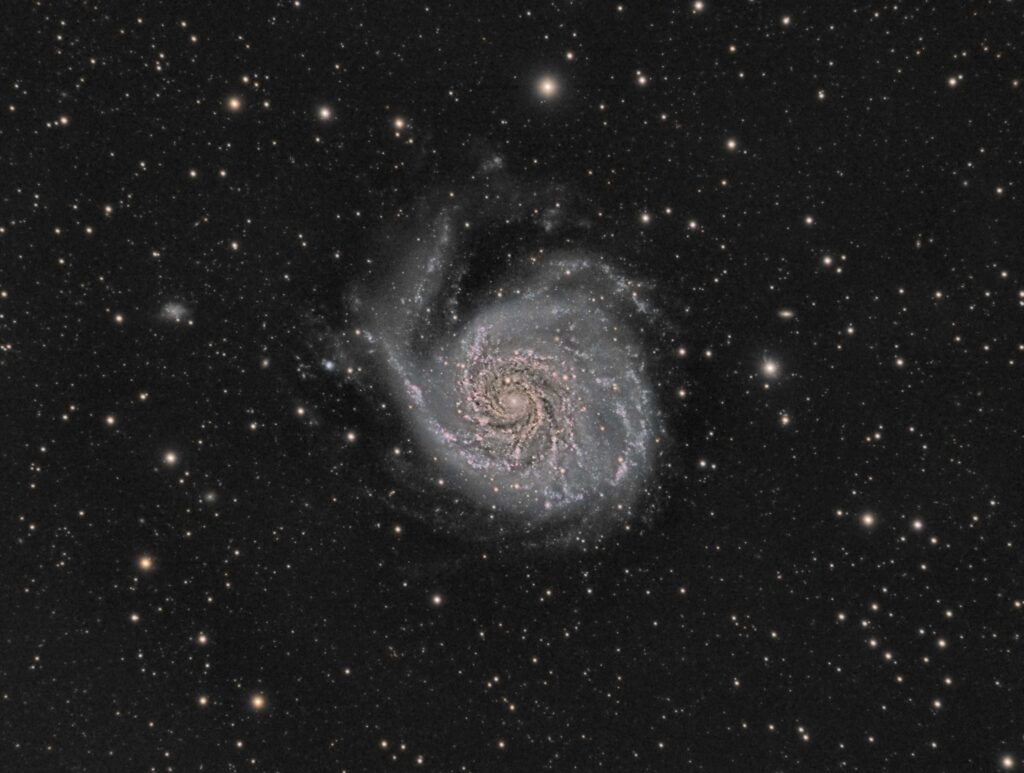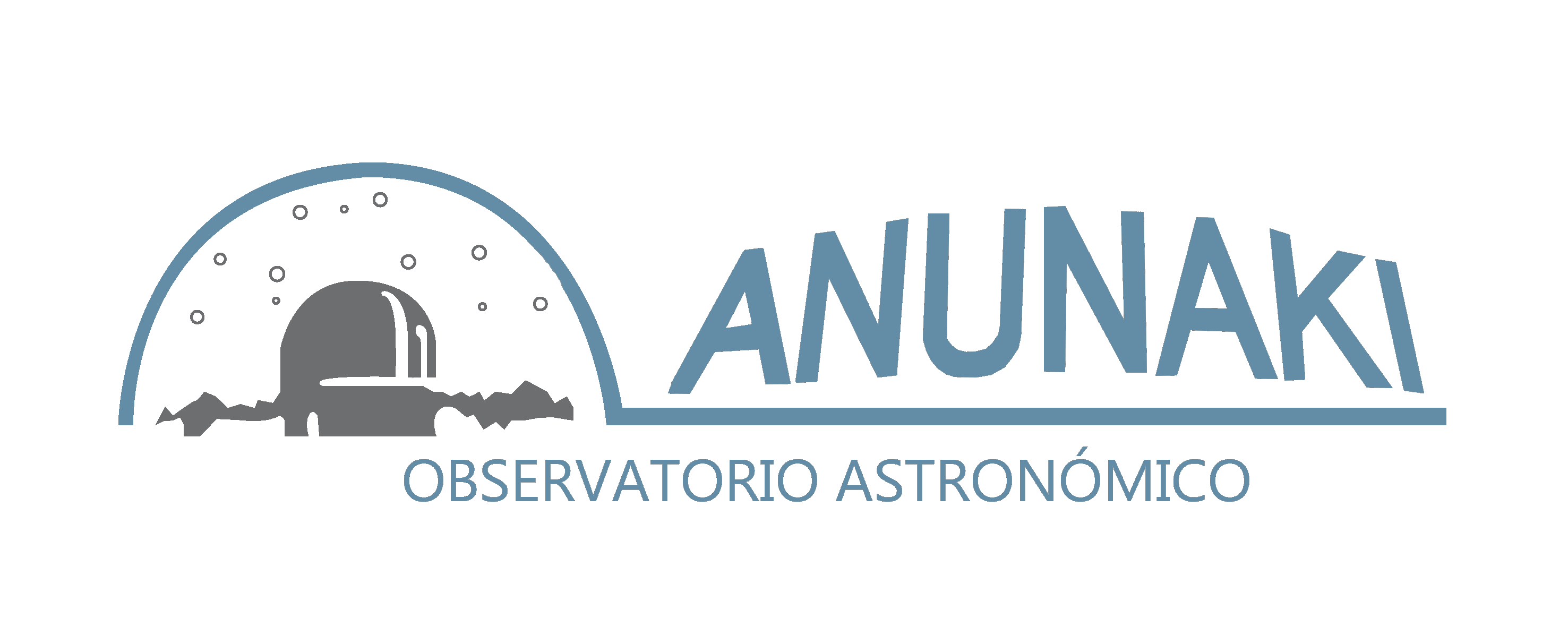The Pinwheel Galaxy (also known as Messier 101 or NGC 5457) is a spiral galaxy 25 million light-years away in the constellation Ursa Major.
It was discovered by Pierre Méchain on March 27, 1781, who subsequently communicated his discovery to Charles Messier who verified its position and added it to the Messier Catalogue as one of the last entries.

Acquisition details:
Baader Blue (CMOS-Optimized) 36 mm: 20×300,″(1h 40′)
Baader Green (CMOS-Optimized) 36 mm: 20×300,″(1h 40′)
Baader H-alpha 6.5nm (CMOS-Optimized) 36 mm: 30×900,″(7h 30′)
Baader Red (CMOS-Optimized) 36 mm: 20×300,″(1h 40′)
Baader UV/IR CUT Luminance (CMOS Optimized) 36 mm: 28×300,″(2h 20′)
Time of integration:
14h 50
On August 24, 2011, a Type Ia supernova was discovered in one of its spiral arms: SN 2011fe.
It is one of the largest galaxies existing in the vicinity of the Milky Way, with a diameter of more than twice that of it, and is characterized both by its richness in gas to form new stars and by its high number of HII regions and young star clusters, which points to a high rate of star formation.
This together with the asymmetry it shows in the photographs (which has made it appear in the Atlas of peculiar galaxies of Halton C. Arp as Arp 26, and defined as Spiral Galaxy with a well-defined arm) suggests that relatively recently another galaxy was about to collide with it, causing both phenomena.

Technical data:
Telescope: S/C 8″
CCD:Atik314L+
Focal Length Reducer: Meade 6.3
Filters: LRGB+Ha 12nm
Telescope Guide: SkyWatcher ED80
Mount: LX200 GPSR
Guide CCD: QHY5
Location: Anunaki Observatory / Rivas Vaciamadrid (Madrid)
This galaxy has an almost non-existent bulge, and according to recent studies it seems to lack a supermassive black hole at its center, unlike, for example, our galaxy.
M101 is accompanied by five prominent satellite galaxies: NGC 5204, NGC 5474, NGC 5477, NGC 5585, and Holmberg IV, which may be responsible for its current state – in fact, M101 appears to have distorted the galaxy NGC 5474. It is part of the M101 Group.
